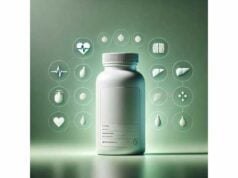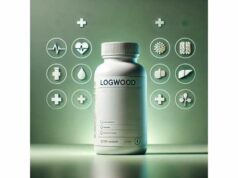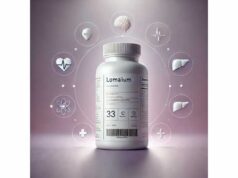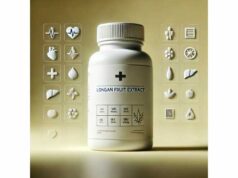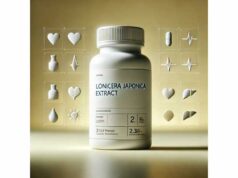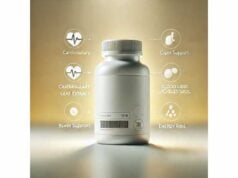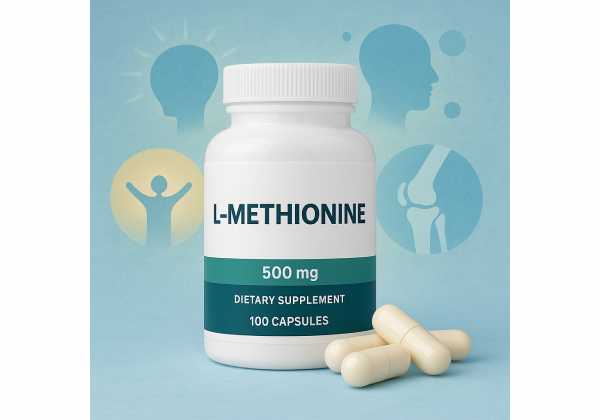
L-methionine is an essential sulfur-containing amino acid—your body cannot make it, so you must get it from food or supplements. More than a building block for protein, methionine is the first step in your cells’ primary methylation pathway. It converts to S-adenosylmethionine (SAM), the universal methyl donor that regulates DNA and histone methylation, neurotransmitter synthesis, phospholipid remodeling, and detoxification. Methionine also feeds the transsulfuration route that generates cysteine and, ultimately, glutathione—the cell’s most abundant antioxidant. These intersecting pathways explain why methionine can influence energy, mood, liver function, and homocysteine balance. In supplements, L-methionine appears solo or in blends with B-vitamins or lipotropes; in clinical practice, closely related strategies include SAM and dietary sulfur amino acid restriction for specific indications. This guide translates the biochemistry into practical steps: what benefits are realistic, how to dose and time it, who should avoid use or seek medical advice, and where the evidence sits today.
Key Insights
- Supports methylation via SAM formation and supplies sulfur for cysteine and glutathione.
- Typical supplemental range: 500–2,000 mg/day in 1–3 divided doses with meals.
- Safety caveat: excess intake can raise homocysteine; pair with adequate folate, vitamin B12, and vitamin B6.
- Avoid high-dose use if you have uncontrolled cardiovascular risk, homocystinuria, severe liver disease without supervision, or bipolar disorder.
Table of Contents
- What is L-methionine and why it matters
- Does it work? Realistic benefits
- How to take it: dosage and timing
- What changes results: key variables
- Common mistakes and troubleshooting
- Safety, who should avoid, and interactions
- What the evidence says today
What is L-methionine and why it matters
A methylation spark plug. L-methionine is the precursor to S-adenosylmethionine (SAM), formed by methionine adenosyltransferase using ATP. SAM then donates methyl groups to hundreds of methyltransferases that tune gene expression, nerve signaling, phosphatidylcholine synthesis, creatine production, and more. After methyl donation, SAM becomes S-adenosylhomocysteine, which is hydrolyzed to homocysteine. Homocysteine has two options:
- Remethylation back to methionine using folate (5-methyltetrahydrofolate) and vitamin B12 or betaine-dependent routes.
- Transsulfuration to cystathionine and then cysteine, a precursor to glutathione, via vitamin B6-dependent enzymes.
Why this network matters. Smooth cycling through these pathways keeps methylation reactions running, limits homocysteine buildup, and maintains antioxidant capacity. When intake or cofactors are inadequate—or when metabolism is genetically or disease-altered—homocysteine can rise, methylation patterns can drift, and oxidative stress can increase.
Dietary sources. Methionine is abundant in animal proteins (eggs, fish, poultry, meat) and present at lower levels in legumes, nuts, and seeds. Typical mixed diets supply several grams per day of total sulfur amino acids (methionine + cysteine). Vegans and low-protein eaters may run closer to minimal intakes, making thoughtful menu planning or supplementation more relevant.
Supplement forms.
- L-methionine (free form): capsules or powder.
- SAM (S-adenosylmethionine): a downstream metabolite with distinct evidence for mood and joint health; requires enteric-coated or stabilized forms.
- Combinations: methionine with B-complex, choline, inositol, or betaine to support methylation; specialized medical uses (under supervision) also exist.
Not a shortcut. Methionine is powerful because it sits upstream of many controls; that also means imbalances can propagate widely. Benefits are most consistent when intake matches need, cofactors are in place, and total protein quality is good.
Does it work? Realistic benefits
1) Methylation support and metabolic balance. By replenishing the SAM pool, L-methionine can normalize methylation-dependent processes in people with low sulfur amino acid intake or high demand. Practical effects include steadier energy and cognitive clarity in those previously under-consuming protein or B-vitamins. If diet and cofactors are adequate, additional methionine usually offers diminishing returns, and more is not better.
2) Antioxidant and detoxification pathways (via cysteine and glutathione). Methionine funnels sulfur to cysteine, which your body uses to make glutathione. When combined with sufficient glycine and glutamate, this can strengthen cellular defense against oxidants and support phase II detoxification. The effect is gradual and cofactor-dependent; robust glutathione synthesis also requires vitamin B6, selenium (for glutathione peroxidases), and adequate protein overall.
3) Liver support in specific contexts. The liver relies on tightly regulated methionine/SAM flux for phosphatidylcholine synthesis (membrane integrity, VLDL export), polyamine production (regeneration), and antioxidant defenses. In some liver conditions, methionine handling is altered. Thoughtful use—often as SAM or within dietitian-guided protein plans—may aid membrane repair and redox balance. Unsupervised high-dose methionine is not advisable in active liver disease.
4) Hair, skin, and nail structure (keratin sulfur). Keratin crosslinking requires sulfur. Adequate total sulfur amino acids help maintain nail hardness and hair strength. For most people eating enough protein, targeted methionine adds little; for low-protein diets, 500–1,000 mg/day can be tried for 8–12 weeks alongside a protein upgrade and biotin-replete diet.
5) Urine chemistry in select stone disorders (niche). DL-methionine has been used to acidify urine in veterinary practice and, historically, in some human protocols to influence solubility of certain stone types. Today, stone prevention in humans emphasizes hydration, dietary sodium moderation, and individualized medical therapy rather than routine methionine acidification. Do not self-treat kidney stones with methionine.
6) Clinical toxicology (strictly medical use). Oral methionine has served as an antidote alternative to N-acetylcysteine for acetaminophen overdose in resource-limited settings. This is an emergency protocol under medical supervision and not a supplement use case.
Temper the expectations. Methionine is foundational, not “ergogenic” in the stimulant sense. If you already hit protein targets and maintain good B-vitamin status, benefits from additional methionine are subtle. If you are short on any of those, correcting the diet first often outperforms pills.
How to take it: dosage and timing
Typical supplemental ranges (adults).
- General nutrition support: 500–1,000 mg/day, split once or twice with meals.
- Short trial for hair/nails or low-protein diets: 1,000–2,000 mg/day in 2–3 divided doses for 8–12 weeks, then reassess.
- Do not megadose. Intakes far above dietary needs can raise homocysteine and negate potential benefits.
Cofactor pairing. To keep homocysteine in check and support methionine cycling, ensure:
- Folate (dietary greens or 200–400 mcg/day folic acid/folate from a multivitamin unless otherwise directed),
- Vitamin B12 (adults often need 2–6 mcg/day; supplement more only if deficient or instructed),
- Vitamin B6 (1.3–1.7 mg/day from diet or multivitamin),
- Choline or betaine from food (eggs, whole grains, beets) if folate intake is low.
Timing. Take with meals to improve tolerance and integrate with protein intake. Spreading doses helps avoid GI upset and large transient spikes in methionine and homocysteine. Avoid late-evening large doses if you notice restlessness.
Stacking examples (illustrative).
- Diet upgrade first: target 1.2–1.6 g/kg/day total protein (individualize by health status), with mixed sources to cover sulfur amino acids; add 500 mg L-methionine only if diet remains short.
- Methylation-conscious multinutrient: modest methionine (500 mg/day) + B-complex covering folate/B12/B6; reassess energy, mood, and homocysteine after 8–12 weeks through your clinician.
- SAM alternative: if your target is mood or joint comfort, enteric-coated SAM used per product guidance often has stronger clinical backing than methionine itself.
Trial length. Commit to 8–12 weeks before judging non-medical goals. Stop sooner if you experience adverse effects or your clinician advises discontinuation.
Special populations. Pregnant or breastfeeding people, children, and those with liver, kidney, or cardiovascular disease should not self-supplement beyond a standard multivitamin’s nutrients without individualized guidance.
What changes results: key variables
1) Baseline diet quality. Methionine shines when total protein or sulfur amino acids are marginal, or when B-vitamin intake is inconsistent. If you already meet protein targets with varied foods, added methionine rarely produces big changes.
2) B-vitamin status and genetics. Folate/B12/B6 status—and genetic variants (for example, in MTHFR or CBS)—shape homocysteine handling. Poor status or certain variants can tip the balance toward higher homocysteine after methionine loading. Practical step: prioritize a balanced diet or a basic multivitamin rather than escalating methionine.
3) Health conditions.
- Liver disease: methionine/SAM regulation is often disrupted; unsupervised high-dose methionine is not appropriate. Some contexts favor SAM or dietitian-guided protein strategies instead.
- Kidney stones: urine pH and cystine/struvite stone risk are nuanced; routine urine acidification with methionine is not standard care in humans.
- Neuropsychiatric conditions: high methionine or SAM can alter neurotransmitter methylation; people with bipolar disorder or schizophrenia should seek specialist input before use.
4) Overall sulfur amino acid balance. Methionine and cysteine are metabolically interconvertible to an extent. Diets already rich in animal protein usually cover needs. Vegan diets can meet requirements with careful planning (legumes, soy, grains, nuts, seeds) but may benefit from protein consolidation across meals.
5) Exercise and recovery. Strength or endurance gains from methionine alone are unlikely. However, maintaining protein quality and methyl donors can indirectly support adaptation by sustaining creatine synthesis and phospholipid turnover. Creatine itself is often a more direct lever for performance.
6) Lab monitoring. If you plan more than 1,000 mg/day for over 8–12 weeks, talk with your clinician about checking homocysteine and B-vitamin status. Aim for optimization, not maximal intake.
Common mistakes and troubleshooting
Mistake 1: Treating methionine as a stimulant. It is a metabolic substrate, not a quick energy shot. Fix: judge by training quality, recovery, or specific goals after several weeks, not minutes.
Mistake 2: Ignoring cofactors. Adding methionine without folate/B12/B6 support can push homocysteine upward. Fix: cover B-vitamin basics through diet or a standard multivitamin unless medically contraindicated.
Mistake 3: Megadosing to accelerate results. High intakes increase GI complaints and homocysteine without clearer benefits. Fix: stay within 500–2,000 mg/day unless a clinician directs otherwise.
Mistake 4: Self-treating stones or liver issues. These require individualized care. Fix: consult urology/hepatology; follow evidence-based protocols.
Troubleshooting quick guide
- Nausea or reflux: cut each dose in half, take strictly with meals.
- No noticeable change after 12 weeks: discontinue or switch focus to total protein quality, creatine, or SAM depending on goals.
- Elevated homocysteine on labs: reduce or stop methionine; optimize folate/B12/B6; consider betaine-rich foods; recheck under clinician guidance.
- Mood shifts (activation, irritability): stop and discuss alternatives (e.g., SAM or lifestyle levers) with your clinician.
FAQs
- Can vegetarians or vegans use it? Yes, but start low and emphasize whole-diet protein planning first.
- Can I take it with creatine or omega-3s? Yes—no known adverse interactions at standard doses.
- Is SAM the same thing? SAM is the activated form your body makes from methionine; many mood/joint studies use SAM directly.
Safety, who should avoid, and interactions
General safety. At customary supplement doses (500–2,000 mg/day) most healthy adults tolerate L-methionine. The main biochemical concern is homocysteine elevation when methyl donors are insufficient or genetics/illness impair recycling.
Potential side effects.
- Gastrointestinal: nausea, reflux, bloating—dose-related and improved by taking with food or dividing doses.
- Headache or restlessness: reduce dose or discontinue.
- Body odor changes: sulfur metabolites can alter sweat/urine odor; typically mild.
Who should avoid or seek medical guidance first.
- Cardiovascular risk (especially with high baseline homocysteine): avoid unsupervised high-dose use.
- Homocystinuria or severe CBS/MTHFR pathway disorders: specialist care only.
- Active liver disease: avoid self-supplementation; specialized management may use SAM or diet strategies.
- Bipolar disorder or history of mania: methionine/SAM can influence neurotransmitters; use only with psychiatric oversight.
- Pregnancy and lactation: meet needs through diet unless your clinician recommends a specific product.
- Children: medical guidance required.
Interactions.
- Folate/B12/B6: supportive; many multivitamins are sufficient.
- Levodopa (without carbidopa): high protein or amino acid boluses can interfere with absorption; space dosing as advised by your clinician.
- Anticonvulsants, metformin, or PPIs: these may affect B-vitamin status; coordinate monitoring if you supplement methionine.
- SAM or high-dose methyl donors: stacking can be overly activating; titrate carefully.
When to stop and call a professional. New chest discomfort, severe mood changes, intractable GI symptoms, or significant lab changes (rising homocysteine or liver enzymes) warrant immediate reassessment.
What the evidence says today
Mechanistic bedrock. The methionine → SAM reaction is a control point for methylation and growth signaling. In disease models and certain cancers, the SAM axis is a targetable metabolic vulnerability, underscoring the pathway’s centrality. While this does not mean healthy people should pursue extremes, it highlights why balanced methionine metabolism matters for normal physiology.
Homocysteine and vascular risk. Elevated homocysteine correlates with vascular dysfunction and stroke risk. Genetic approaches and trials suggest that lowering homocysteine—primarily by repleting folate and, in some cases, B6—may reduce stroke risk, though benefits for coronary disease are less certain. For supplement users, the practical takeaway is simple: if you add methionine, cover your B-vitamin bases and avoid excess dosing.
Dietary sulfur amino acid restriction (SAAR). In humans with overweight or obesity, controlled SAAR diets show metabolic effects (weight loss signals, hormonal shifts), echoing animal literature on methionine restriction and metabolic health. These are diet patterns under study—not instructions to under-eat protein. For most people, the right approach is adequate protein with quality sources, not chronic restriction or chronic excess.
Stones and urine chemistry. Contemporary human studies emphasize hydration, sodium moderation, and tailored agents (e.g., thiol drugs for cystinuria) over acidifying supplements. By all means, improve diet quality; do not rely on methionine to manage stones.
Liver health. Hepatic methionine metabolism is tightly controlled. Disturbances in this network appear in fatty liver and other chronic liver diseases. This again supports a precision approach: if liver issues are present, work with a clinician; do not self-dose methionine hoping for detox.
Bottom line. Methionine is indispensable but double-edged at extremes. Most benefits are realized by meeting needs without overshooting, with strong attention to B-vitamins and overall diet quality.
References
- S-adenosylmethionine biosynthesis is a targetable metabolic vulnerability in multiple myeloma 2024 (Mechanistic/Oncology)
- Homocysteine, B vitamins, and cardiovascular disease: a Mendelian randomization study 2021 (MR Analysis)
- Dietary sulfur amino acid restriction in humans with overweight and obesity: a translational randomized controlled trial 2024 (RCT)
- The Impact of Diet on Urinary Risk Factors for Cystine Stone Formation 2021 (Human Dietary Study)
- Methionine metabolism in chronic liver diseases 2020 (Review)
Medical Disclaimer
This content is educational and does not substitute for personalized medical advice, diagnosis, or treatment. Supplements can interact with conditions and medications, and methionine may raise homocysteine in susceptible people. Speak with a qualified healthcare professional before starting L-methionine—especially if you have cardiovascular risk factors, liver or kidney disease, mental health conditions, are pregnant or breastfeeding, or plan to combine multiple methyl-active supplements. If you notice adverse effects, stop use and seek medical guidance.
If you found this useful, please consider sharing it on Facebook, X (formerly Twitter), or any platform you prefer, and follow us for future evidence-based guides. Your support helps us continue producing high-quality content.

